

IDDBA 25 Takeaways
IDDBA Takeaways
Roundtable
The IDDBA closed out another vibrant and polished show in New Orleans, LA. Exhibitors continue to laud show organizers for consistently connecting them with skilled decision-makers from admired retailers, allowing for networking and driving sales. On the other side of the booth, retailers were impressed with fresh takes on familiar items and delectable foods that entice consumers to visit their neighborhood stores.
“Our hope this year and every year, is that our Convention & Expo serve as a springboard for insightful conversations, meaningful connections and game changing ideas for both our exhibitor and attendee companies,” said IDDBA President and CEO David Haaf.
As a former retailer, Haaf understands better than most how boosting sales, discovering products and participating in workshops foster industry growth and directly support achieving financial goals. “Clearly the ‘end game’ for both exhibitors and attendees is in large part about growing sales!” Haaf said. “As a previous retailer who never missed an IDDBA, it was all about great new products, innovation, educational speaker workshops and networking opportunities beyond any other venue I participated in throughout the year. All these aided in enhancing my total customer experience at store level, which in turn aided in achieving our financial goals and objectives.”
The IDDBA ensures the appropriate retailers and manufacturers attend each year to create an environment that is conducive to networking and conducting business. “It’s a year-long process, for sure,” said Haaf. “It always starts by asking and listening to both our exhibitors and attendees feedback on what they enjoyed, but equally and more importantly, what we can do better. Our goal is always to make next year’s IDDBA Convention & Expo—‘The Best One Yet!’ To do that, we must continue to find ways to bring value and enhanced experiences to our venues. In addition to our participant feedback, we are constantly ‘thinking outside of the aisle’ for ways to enhance the show.
“One of the standout items I discovered was Reser’s Fine Foods’ new line of cottage cheese-based dips. They were fantastic—on-trend, flavorful and a strong candidate for our future offerings. Second, Italian meat charcuterie vendors continue to see strong growth at these shows. Another item that stood out to me was from Fratelli Beretta—The La Dolce Vita platters. These ready-to-serve assortments make it easy for customers to create an ‘instant’ charcuterie board—an increasingly popular solution for convenience and entertaining This was the largest show in our industry—and it was truly impressive. Not only were the category-leading brands well represented, but we also discovered several promising first-time vendors. These newcomers bring fresh energy and innovation, which we’ll certainly look to incorporate into our future offerings.” — Brian Freeman, Category Business Manager— Specialty Deli, Northeast Shared Services
Just these past couple years, we’ve added things such as Retail Tours, Monday Night Party, Hosted Buyer Program, ‘Close Up Kitchen’ and ‘attendee requested’ workshops to our venue. Year round, we’re constantly working on our marketing strategies and focusing on specific targeted groups of retailers. As part of our new strategies, we’re looking at ways to encourage higher penetration in existing attendee companies, as well as new attendees who have not yet experienced all IDDBA has to offer. As with our community of supply chain and retail companies, this is a constant evolution that requires persistence and dedication. We understand that’s what it will take to ‘Stand in the Future Together’ with our great community of IDDBA members and our industry!”
Exhibitor’s Goals: “At IDDBA, our primary goal was to showcase Dietz & Watson’s continued leadership in transparency, food safety and innovation,” said Marketing Director Taylor Grissinger. “We highlighted our long-standing commitment to doing things ‘The Right Way,’ reinforcing the quality and integrity that has been woven into every step of our process since 1939. We brought members of our quality control and corporate training teams to the booth, and their presence helped educate attendees on the rigorous standards we uphold. The direct interaction between Dietz & Watson staff and IDDBA attendees allowed us to communicate the Dietz Difference in a more personal and
credible way. Additionally, we reintroduced our virtual manufacturing facility tour, a digital experience that gave booth visitors a behind-the-scenes look at our operational excellence and commitment to food safety. Using touchscreens, attendees could explore our facilities and witness firsthand how we define our process. Overall, we were satisfied with our ability to bring these initiatives to life at the show. Feedback from attendees suggested that our messaging resonated and helped deepen understanding of our brand values and premium brand standards.”
“Just from the sheer enthusiasm of the attendees, I thought this year’s show was one of the best I’ve seen in a few years,” said Bob Sewall, Executive Vice President of Sales and Marketing for Blount Fine Foods. “The overall enthusiasm level was way up, which is great. So, as for our goals, we probably are launching the most new items we ever have at this particular show. We had four new Panera items, we had eight new Blount Family Kitchen soups plus four new entrees. It was a lot of excitement. We were able to engage customers on some of the new items, which was great. I thought that was terrific. It's a gathering of our national customer base so they come to the show, literally they come up and ask, ‘What’s new?’ Their mindset is all about what’s new, so the table is set so it’s awesome with that respect. That’s what differentiates
r Cont'd on Pg. 4








Available in various formats, each premium deli o ering is sliced and packaged in our USDA certified facilities






IDDBA Takeaways: Roundtable
r From Pg. 2
this show from other shows is that it’s so focused on our category—deli— and our customers attend the show. You couldn’t ask for more. It’s a monster from beginning to end in terms of cost, logistics, getting your sales team there—all of those kinds of things. But yet we’re able to have dinner with customers every night, so it’s all good. No complaints from us in any form or fashion.”
“Our goal at IDDBA was to introduce buyers to our new line of ¡Yo Quiero! grab-and-go! Products,” said Tara Murray, VP Marketing for Fresh Innovations. “With the popularity of grab-and-go and with retailers spending time and money on grab-and-go sections in their stores, our line of 4-oz products is perfect for any set. They can be merchandised in the grab-and-go section, by the RTE meals and with fresh cut fruits and veggies. I feel that we met that goal at this year’s IDDBA. We had great conversations with key deli buyers from a multitude of retailers. They loved the products and can’t wait to get them in their stores.”
“Coming into IDDBA this year, our focus was to build on the momentum from our debut in 2024 and reinforce that Pretzelized isn’t just a product— it’s a brand movement,” said Founder Sam Kestenbaum. “Last year was all about introducing Pretzelized to the market. This year was about deepening existing relationships, showing how far we’ve come, and celebrating the early believers, the Pretzelutionaries, who took a chance on us. To mark that evolution, we brought something special: the Pretzelution Manifesto. It’s a statement of what our brand stands for and where we’re headed. We invited our earliest supporters, those who embraced us from day one, to sign it right at the booth. It became a powerful moment of endorsement and connection, signaling that Pretzelized has a real community behind it, and that’s something very special. From new flavors to expanded foodservice capabilities, everything we showcased at the show was a reflection of our growth, our momentum, and our belief that Pretzelized is a platform with staying power.”
What Makes IDDBA Unique: “IDDBA offers exhibitors a uniquely concentrated audience that aligns perfectly with our core business areas,” Grissinger said. “Unlike more generalized food shows, IDDBA allows us to have direct, meaningful conversations with key decision-makers and category buyers who are specifically looking for product and program solutions in the space we operate in. It provides an opportunity for us to engage with both current and prospective retail partners on a deeper level. The show creates space for collaborative discussion around strategic programming, critical pain points and opportunities for category growth. These face-to-face interactions often result in actionable insights and relationship-building that can’t easily be replicated in other environments.”
“It’s IDDBA’s ability to focus on our category—deli—and it gets our customers there,” Sewall said. “They do a better job than anyone else at any other event and doing those two things, which is of the utmost importance .”
“For us, we really like IDDBA because we get to speak directly to the deli buyers,” Murray said. “Because of our dual packaging strategy, we have products in both produce and deli and this show allows us to get in front of key deli buyers and share our better-for-you line of dips. We spend a great deal of time at produce tradeshows throughout the year, and IDDBA allows us to extend our reach of products to the deli.”
“IDDBA is where the right conversations happen for a brand like Pretzelized,” Kestenbaum said. “Unlike broader shows, it brings together the exact decision-makers we want to engage: those in deli, bakery and prepared foods who truly understand and appreciate the kind of innovation we’re bringing to the table. It’s less about quantity and more about quality of interactions. The attendees come with purpose and intention, which makes every conversation more meaningful and impactful.”
Noteworthy Trends: “One of the most prominent trends this year was the continued expansion of grab-andgo programs—with a focus on convenience, freshness and variety,” Grissinger said. “Consumers are continuing to seek premium options in the grab and
go space that require minimal tradeoff between quality and convenience. We also saw a renewed push toward meal solutions and prepared foods. More shoppers are opting to eat at home, but with a high-quality standard and minimal prep required. This reinforces the importance of value-added offerings that bring both flavor and ease to the table. For Dietz & Watson, these trends present clear growth opportunities. Between our ready-to-enjoy items and pre-sliced proteins and cheeses, we are positioned to serve this demand. As we look ahead to the future of deli, we’ll continue to pioneer sales programs and merchandising strategies that help retailers capitalize on these evolving consumer preferences.”
“Based on our own customer base, there was a lot of interest in the entrée category for fresh, which was great because it’s right in our wheelhouse,” Sewall said. “The other trend I saw was that people are getting more into the hot-to-go soup. We’re seeing a renewed vigor around the hot soup business and also we’re seeing the continuation of looking for fresh entrees at grab-and-go which is right in our wheelhouse and then the other thing I thought was interesting too was that many people looking for items that are healthier. There’s an overall trend in the US to eat better, and it transcends all age groups.”
Impression on Booth Visitors: “We hope attendees walked away with a clearer understanding that Dietz & Watson is more than a product supplier, we’re a premium deli partner with a strategic, solution-oriented approach,” Grissinger said. “Whether through customizable merchandising, transparent manufacturing practices or innovative program offerings, our goal is to create mutual value for both the brand and our retail partners. We aim to support our customers with the right tools and insights that solve today’s retail challenges and help drive long-term growth for the category.”
“There’s an expectation of our customers from us to continue to bring innovation, to continue to bring new ideas and products,” Sewall said. “They were satisfied to see how much new stuff was going on, and we met their expectations.”

24 OZ GRAB & GO CUPS
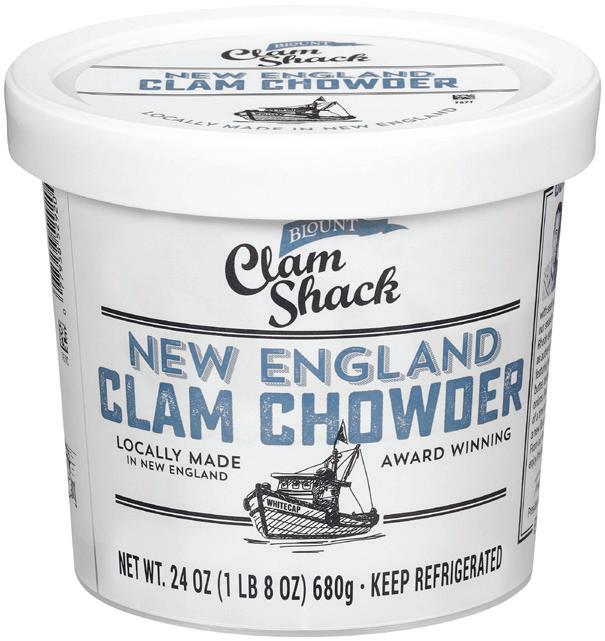
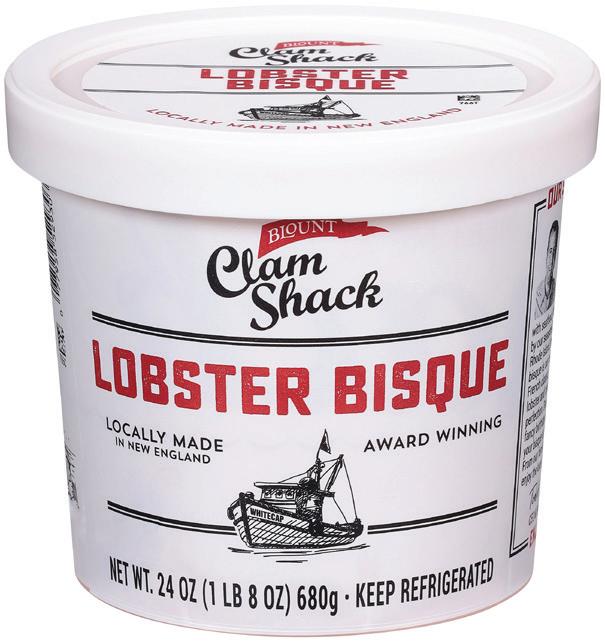
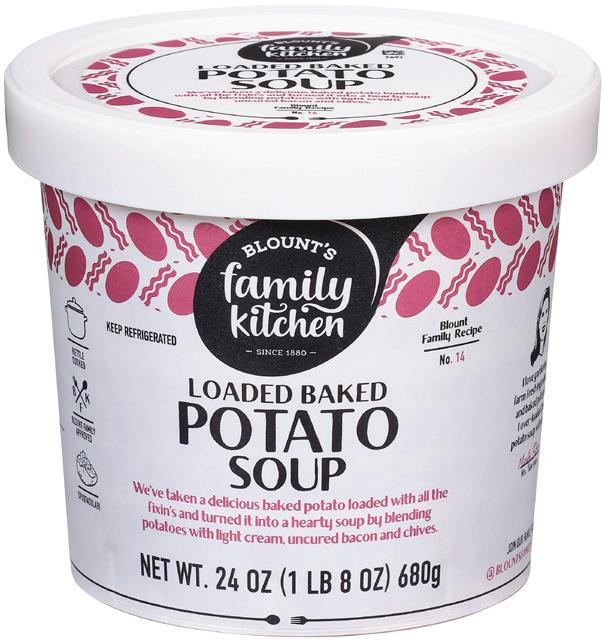
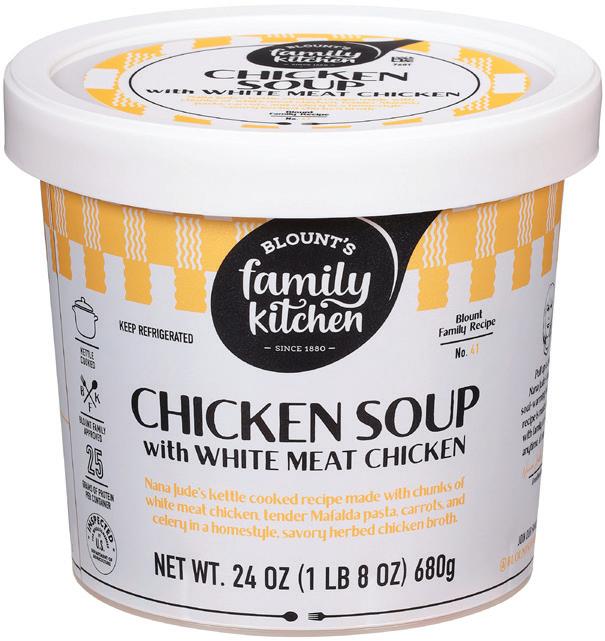
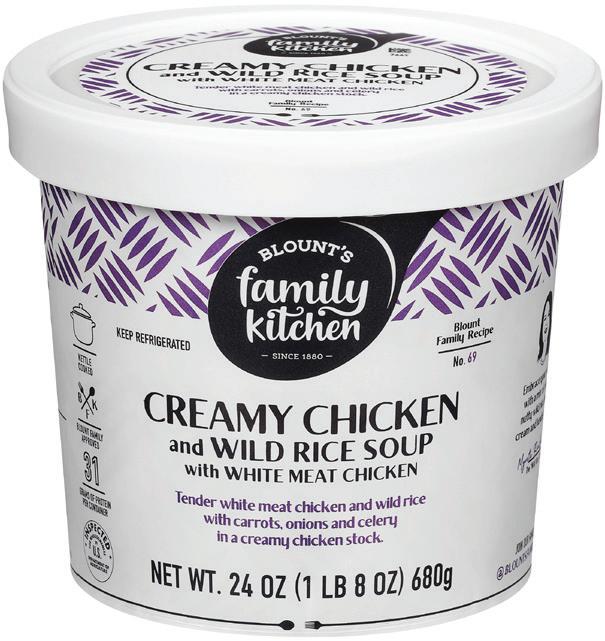
7 OF OUR BEST FAMILY RECIPES
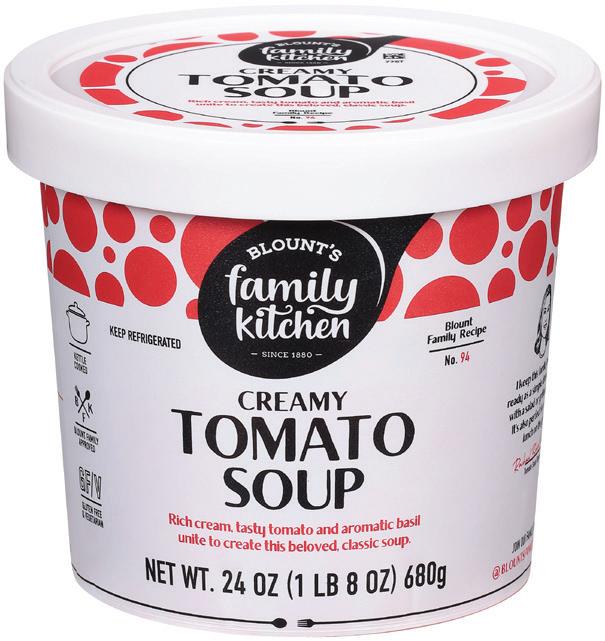
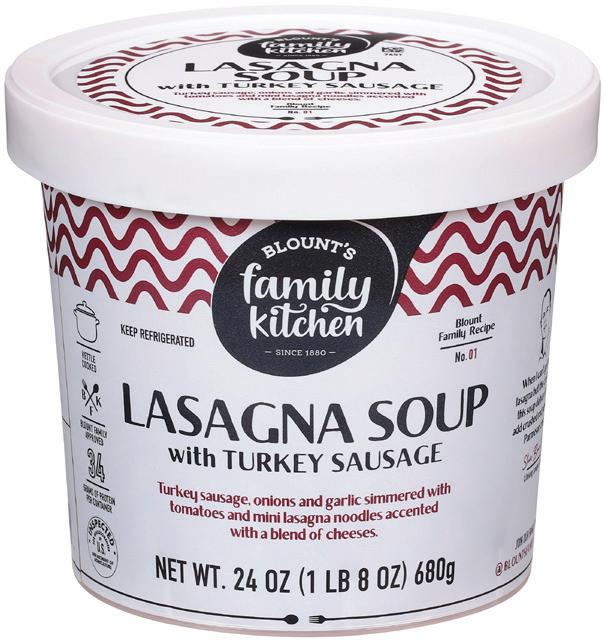
The best ingredients don’t fit in a can.
At Blount, we kettle cook our heartwarming family-inspired soups, and then quick cool them fresh for the deli. We bring these recipes to you, from our family kitchen to yours, to ensure you’re getting the best possible product in its finest state; Refrigerated! It’s not canned. It’s not frozen. IT’S THE UNCANNY SOUP.
Special Report
Made in the USA
The confusing news reports about tariffs has caused many American consumers to try and default to American-made products across the board in hopes the news settles down. The desire to support domestic producers crosses over into grocery, but the lines aren’t always as clear when it comes to certain items that pull materials from multiple sources and also are only adjacent to grocery items—like packaging and store display solutions. While consumers aren’t necessarily aware or concerned about packaging and store fixtures, manufacturers of consumables are taking a pragmatic approach to bolstering their Made in the USA credentials while continuing to support and nurture a global network of suppliers.
Food packaging companies like EasyPak aren’t as concerned with outward facing attributes, though tariff threats are impacting business decisions. “The uncertainty that is probably being felt by all industries is also being felt by the food packaging industry,” said VP of Sales and Marketing Ken Sherry. “The countries of Mexico and Canada really are intertwined in a lot of our customers as well as customers from those countries coming into the US. So, it’s hard to see or know where that will land. In the short term it’s very impactful—negatively—but there is the potential that long term there could be some upside if the uncertainty goes one way or the other. We saw our grocery business be a little flat to slightly up and our food packaging doing the same.”
Meanwhile, retail display fixtures is a segment often overlooked by consumers, but attributes of sourcing and manufacturing domestically in this respect benefit retailers greatly. Making everything from hooks to trays to shelf dividers and more, Trion Industries, founded 60 years ago, and continuing to operate in Wilkes-Barre, PA, has shined amid recent tariff policy changes. “We’ve actually seen recent increase in sales because of our ability to do that source and manufacture in North America,” said Director of Sales and Marketing Craig Weiskerger. “The ability to manufacture products domestically is tricky because labor and raw materials could
be a bit more costly, so you need to be efficient on your manufacturing side. We’ve been able to capture a lot of efficiencies in a lot of our different processes across the factory to keep our costs at least in check and our quality elevated.”
Much of the efficiency stems from having the majority of resources and work flow for processes including welding, metal stamping, powder coating and plastic extrusion all under one roof, said Weiskerger. “The market moved a little more to our advantage recently, but we’ve been a strong leader in the market anyway just because of who we are in the way we do business,” he said. “It’s nice we have that kind of control and our raw materials are mostly North American sourced so we can not only control your lead times but you also could guarantee your quality and the environmental impacts. There’s more environmental impact controls you’ll see with domestic suppliers than you’ll see overseas.”
According to Weiskerger, chrome is one material that is sometimes sourced overseas because it makes business sense, but the commitment by Trion Industries to be a USA manufacturing company has been there since day one. “When they—founder Bud Thalenfeld and now current owner and grandson Adam Thalenfeld—created the factory, we have a work force here with people that have been here 20 to 30 years, in a manufacturing environment,” he said. “It’s obviously a good place to work. So that all is reflected down the road in quality and turnaround times. It’s very common for people in the line making a simple hook, plastic extrusion or pusher tray, knowing exactly which retailer it’s going to. They know who it’s being made for, so you have a kind of pride and dedication of employees that you just don’t see elsewhere.”
When it comes to seafood items that shoppers will actually be consuming, the Made in the USA attribute represents food safety and quality for American consumers. The Alaska Seafood Marketing Institute (ASMI), promotes Alaskan seafood as the No. 1 seafood of choice for consumers worldwide.
“We know that wild seafood is pre-
ferred 4:1 compared to farmed, and essentially all species of Alaska seafood are preferred by a wide margin compared to the same species coming from another source,” said Amy Dukes, Head of Retail Marketing for ASMI. “All seafood from Alaska is wild which makes it a perfect choice for consumers.”
Often, surimi serves as a gateway seafood product to introduce tentative consumers to the ocean’s bounty, and manufacturers like Aquamar are ensuring their products meet a variety of certifications including those made by SQF and the Marine Stewardship Council (MSC)—neither of which are American in origin but have come to represent food safety, sustainability and quality.
“Aquamar is focused on growth in a variety of markets, recognizing that we are competing in a global economy, especially in seafood,” said CEO Daryl Gormley. “We source globally, have international partnerships and look to further develop international markets for our products. Aquamar also recognizes that there are significant growth opportunities close to home, and we include domestic growth in foodservice and retail among our growth targets.”
Gormley shared in January that raw materials for surimi remain abundant and cost effective, providing a reliable and accessible seafood option for consumers. However, at this point in 2025, it is prudent to look beyond US waters.
“We are not convinced that higher costs are unavoidable,” he said. “Aquamar is working hard to offset the threat of cost increases from tariffs and looks to leverage abundant seafood global supply to maintain competitive pricing.”
That said, Aquamar knows that domestic products are important to American consumers. “Made in the USA has always been a consideration for Americans, and we trust having production facilities in the US will continue to be an important part of winning the confidence of American-based businesses,” said Gormley. “Disruptive environments like Covid and now the tariffs underscore the benefit of a supply chain that includes domestic production.”
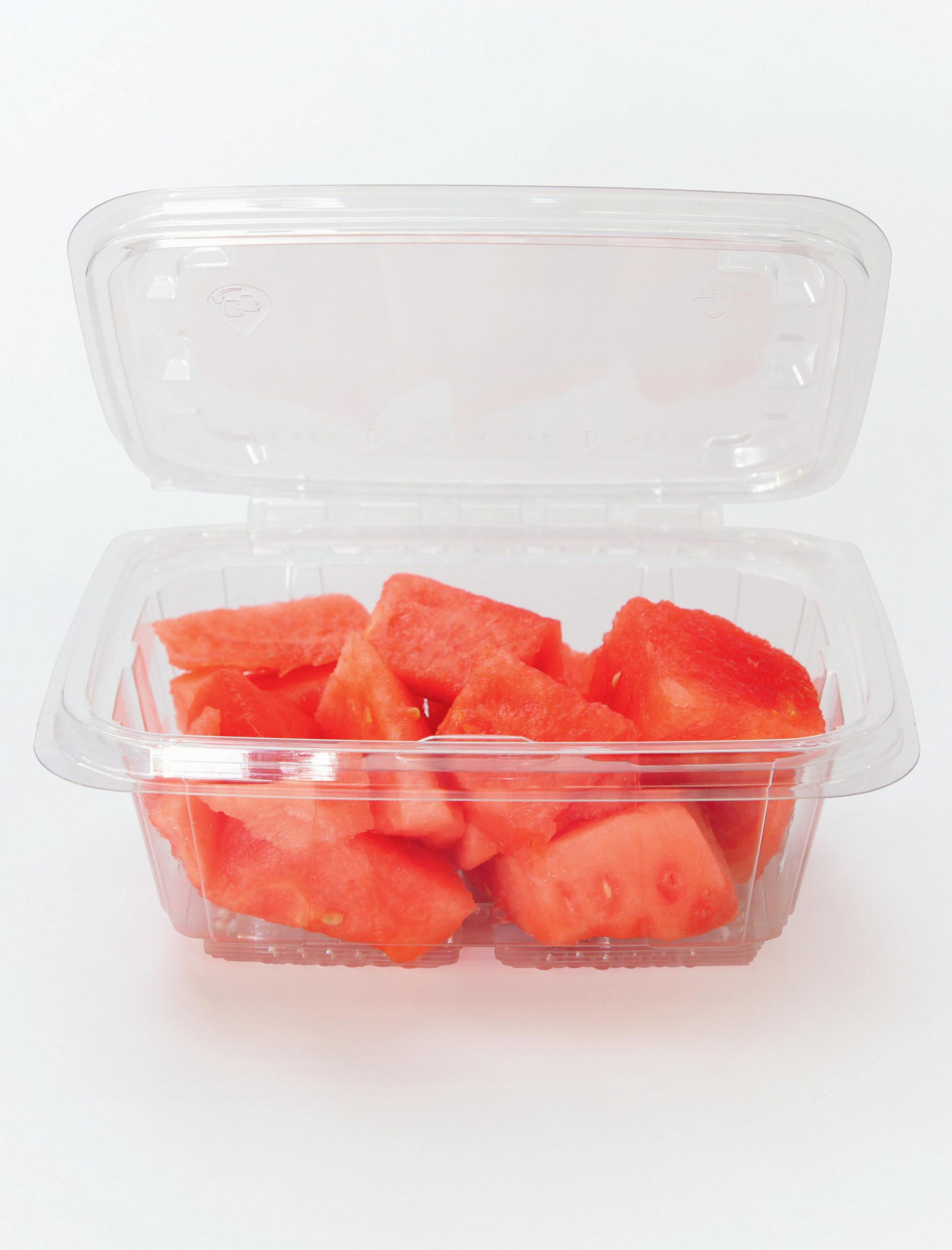
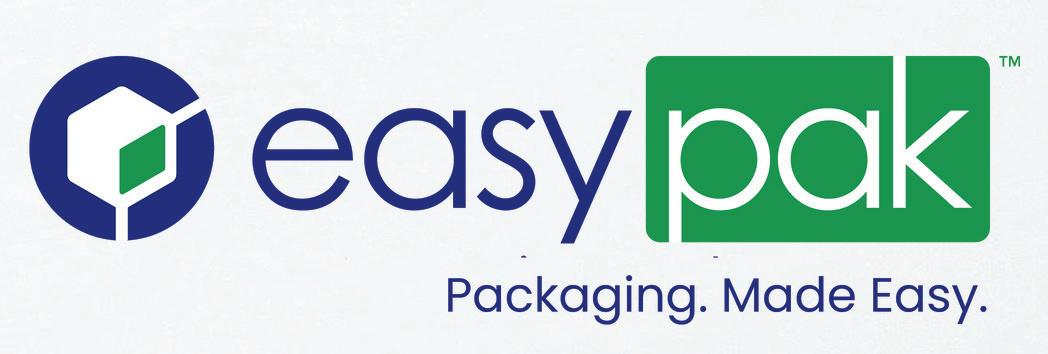
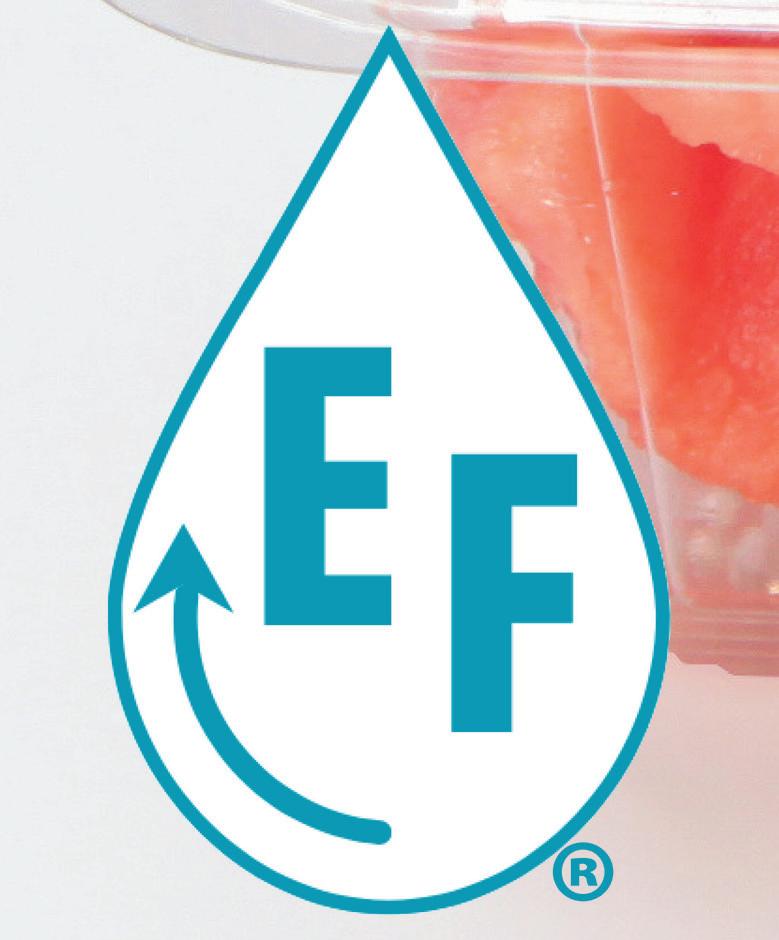











Category Analysis
Seafood Merchandising
The seafood category is experiencing a shift driven by consumer demand for transparency, sustainability and convenience, with buyers noting increased interest in responsibly sourced, no-chemical, wild-caught and fresh options, along with traceability and certifications. Shoppers are looking for more than just price and freshness—they want to understand the sourcing and environmental impact of their seafood, which has led to growth in frozen and pre-portioned products that balance ease of preparation with quality. Convenience remains a key factor, especially among Millennials and Generation Z, who favor portioned, skinless and easyto-prepare options, while recovery from post-Covid inflation has boosted demand for surimi and broader seafood products. All of the recent movement within the seafood space is demonstrating how seafood is lauded for its health benefits, affordability and accessibility with innovation focused on helping consumers—skilled and new to cooking—prepare seafood at home.
“Consumers are increasingly seeking value-added products and attribute-driven seafood, such as responsibly sourced, no chemicals added, wild-caught and fresh options,” said Douglas Varanai, Senior Category Manager of Seafood and Meat at Sprout’s Farmers Market. “This shift has driven the category towards more transparent sourcing and higher quality, sustainably focused products.”
“We’ve seen a significant shift in how customers approach seafood,” said Anthony Moreno, Buyer of Fresh at Lassens Natural Foods. “Today’s shoppers are looking for more than just a price point or basic freshness—they want to understand sourcing, sustainability and impact. Questions like ‘Was this fish sustainably caught?’ or ‘Is this farm-raised responsibly?’ come up more frequently and those expectations have reshaped the way we buy and present seafood. There’s also been increased demand for traceability, cleaner labels and certifications. That has driven growth in frozen and pre-portioned options that balance convenience with quality—something that’s especially appealing to customers
“We believe education is key. A lot of people stick to what they know—usually salmon or shrimp—not because they’re unwilling to explore, but because they’re unfamiliar with how to cook or prepare something different. That’s where we come in. We use signage, simple recipes and merchandising strategies to turn curiosity into confidence. Cross-merchandising with complementary items like grains or sauces helps position seafood as part of a complete meal, not just an isolated item. We also rotate in seasonal or unique offerings to give customers something new to try, supported with clear information about what makes the product special or different. Ultimately, it's about making seafood approachable—and doing that in a way that stays true to our values of natural, clean and sustainable food.”
—Anthony Moreno, Buyer, Lassens Natural Foods
who want to cook at home but may be unfamiliar with preparing seafood from scratch.”
“Consumers today are convenience driven,” said Jason Lutjen, Category Manager at Bashas’. “They are looking for portions, skinless, easy prep and heat and eat options. Millennials and Generation Z continues to evolve the category. While sustainability continues to be of importance, price and convenience are driving the decision-making process.”
“The seafood category is seeing recovery from the drag on demand as a consumer response to post-Covid inflation,” said Aquamar CEO Daryl Gormley. “Aquamar is encouraged to see recovery in the surimi demand and the broader seafood demand. Important to the category is seafood convenience innovation to help consumers honor their interest in eating more seafood at home. Despite the industry tropes, consumers know seafood is healthy, delicious and sustainable. Consumers are also aware of seafood, with seafood finding its way into 80 percent of US households each month. And, seafood is affordable versus other proteins, meaningfully cheaper than beef and within the cost of a cup of Starbucks coffee for households to feed their families seafood in lieu of pork or chicken each day. The real unlock to consumption is helping consumers with preparation at home.”
“We partner with regional fresh distributors who help source high-quality seafood products,” Varanai said. “These
distributors deliver up to six days a week directly to our stores, ensuring freshness and consistent quality.”
“It starts with setting a clear standard for what we consider acceptable in our stores,” Moreno said. “We work closely with partners who align with our values—meaning the seafood must be sourced responsibly, handled properly and delivered with integrity. On our end, we’re diligent about product handling: proper cold chain management, daily inspections, accurate rotation and strong receiving protocols. Our team is trained to look for freshness indicators and to pull anything that doesn’t meet our quality standards. For frozen and smoked seafood, we look for clean ingredient decks, strong sourcing practices and consistency in flavor and presentation. These items allow us to offer variety while still maintaining the high standards our customers expect.”
“We source our seafood from only reputable suppliers and our stores receive fresh seafood deliveries every day of the week but Sunday,” Lutjen said.
“Aquamar sees the continued growth opportunity for surimi and other convenient seafood options, bringing innovation to an industry historically focused on fishing,” Gormley said. “We are not convinced that higher costs are unavoidable. Aquamar is working hard to offset the threat of cost increases from tariffs and looks to leverage abundant seafood global supply to maintain competitive pricing to help consumers and the category.”
WE DON’T FISH!
WE JUST MAKE FISH EASY & DELICIOUS

At last! Enjoy sumptuous seafood in mere minutes. We’re talking chef-quality culinary concoctions curated from the great cuisines of the world.
SEAFOOD DIFFERENTLY!

Category Analysis
Maple Syrup
Leaders in the maple syrup category have continued to put forth sweet, delicious and importantly, natural, maple syrup products with limited and sustainably sourced ingredients through maintaining high-quality standards. While versatility and convenience continue to trend throughout the category, consumers are also gravitating toward quality and affordability.
“Broadly, consumers continue to gravitate towards pure maple syrup,” said Emma Marvin, Founder of Butternut Mountain Farm. “This is likely driven in part by the value proposition of pure maple syrup. The increasing costs of breakfast staples like eggs, makes breakfast options like pancakes, waffles and French toast—and the accompanying maple syrup—even more appealing as a better value proposition. Continued focus on healthy and alternative sweeteners has increased consumers' awareness of pure maple syrup as being different from pancake syrups—and broadened the occasions where people are using maple syrup. Finally, the frequency of purchase of pure maple syrup, which is less frequent than many household staples—think milk, eggs, bread, etc.—means that sensitivity to price changes is reduced. It's simply harder to remember what you paid for something you bought a month ago.”
“In terms of what we see from our consumers, they love consistent, easy, convenient, great quality products. The controlled dispensing of a squeeze bottle makes maple syrup accessible—no mess, perfect control. We're seeing a great response to this package. We're also seeing interest in specialty packaging that highlights the beauty of the product—making maple syrup a great gift or accent for a special breakfast. We're all looking for things that make us smile, and a beautiful bottle of maple syrup is something that makes people smile,” Marvin said.
Companies within the space have maintained a steady trajectory this year while doing their best to adapt and side step challenges when necessary.
“There seems to be enough syrup to go around again, but the cost of getting
“Those retailers that take the time to work with us will quickly learn that we always do what we say and always try to give them what they ask for, and great retailers understand when the ask is too much. Creating a long-term relationship with retailers and consumers is our goal. We want to be the family that cares, not just the family that sells pure maple syrup.”
—Steve Anderson, Owner, Anderson's Maple Syrup
it is higher—farmers deserve more and are finally getting it in 2025. That of course makes it cost more for us and our customers,” said Steve Anderson, Owner of Anderson’s Maple Syrup.
“We’ve been fortunate to gain distribution in a number of chains this year. Our reps have done a great job telling our story and conveying how our brand works with retailers to grow the category,” said Arnold Coombs, Executive Director of Sales and Marketing at Bascom Family Farms.
“Fulfillment has never been an issue for us, we are always looking ahead to stay on top of our supply and demand. Customer demand I would say is slightly up, but I also believe they consumers are being cautious with what they spend their hard earned money on,” said Anderson.
According to the leading producers, the versatility and utilization of maple syrup has continued to grow due to consumers seeking out various ways to create and substitute with the syrup.
“I think that maple is being used more and more in cooking and other foods as ingredients, so while cooking at home with maple is increasingly popular, so are recipes in your favorite restaurant,” said Anderson.
“Retailers still want to grow sales, and we’re good at that in the maple category. Consumers are demanding healthy, clean label products, and we can provide that,” said Coombs.
While prices continue to rise, maple syrup producers are continuing to seek out ways to deliver value and affordability.
“We are always working to save money and be more efficient in everything we do, but we are also very careful not to cut corners while doing so. Our cus-
tomers expect the best, and that is what we are here to provide,” said Anderson.
“Retailers want to work with us to grow. A brand can’t just sit on the shelf. It has to promote and work to move units. We have a good social media presence, and we work with retailers to maximize that. At the end of the day, what they really want is to move product on the shelves,” said Coombs. “Consumers are still looking for healthy, clean products and maple syrup fits the bill.”
Anderson mentioned that consumers are consistently looking for healthier options and solutions.
“Personal experience says that healthy and natural alternatives to sugar are on the rise, and while the consumer is leery of unfounded health claims, maple is undeniably and always will be 100 percent natural,” said Anderson.
Anderson expressed that retail partners are sharing the importance of lowering prices, but that isn’t always an obtainable request. However, the company strives to build solid and strength partnerships regardless of obstacles.
“Creating a long-term relationship with retailers and consumers is our goal. We want to be the family that cares, not just the family that sells pure maple syrup,” said Anderson.
The maple syrup category has been elevated from its traditional place as a waffle and pancake breakfast staple. Although this remains a top reason for the continued purchase of the sweet syrup, consumers have ultimately helped the category evolve into a more versatile, explorative space. Maple syrup producers maintain their presence in the category through offering high-quality, healthier maple syrup products without sacrificing taste or efficiency.
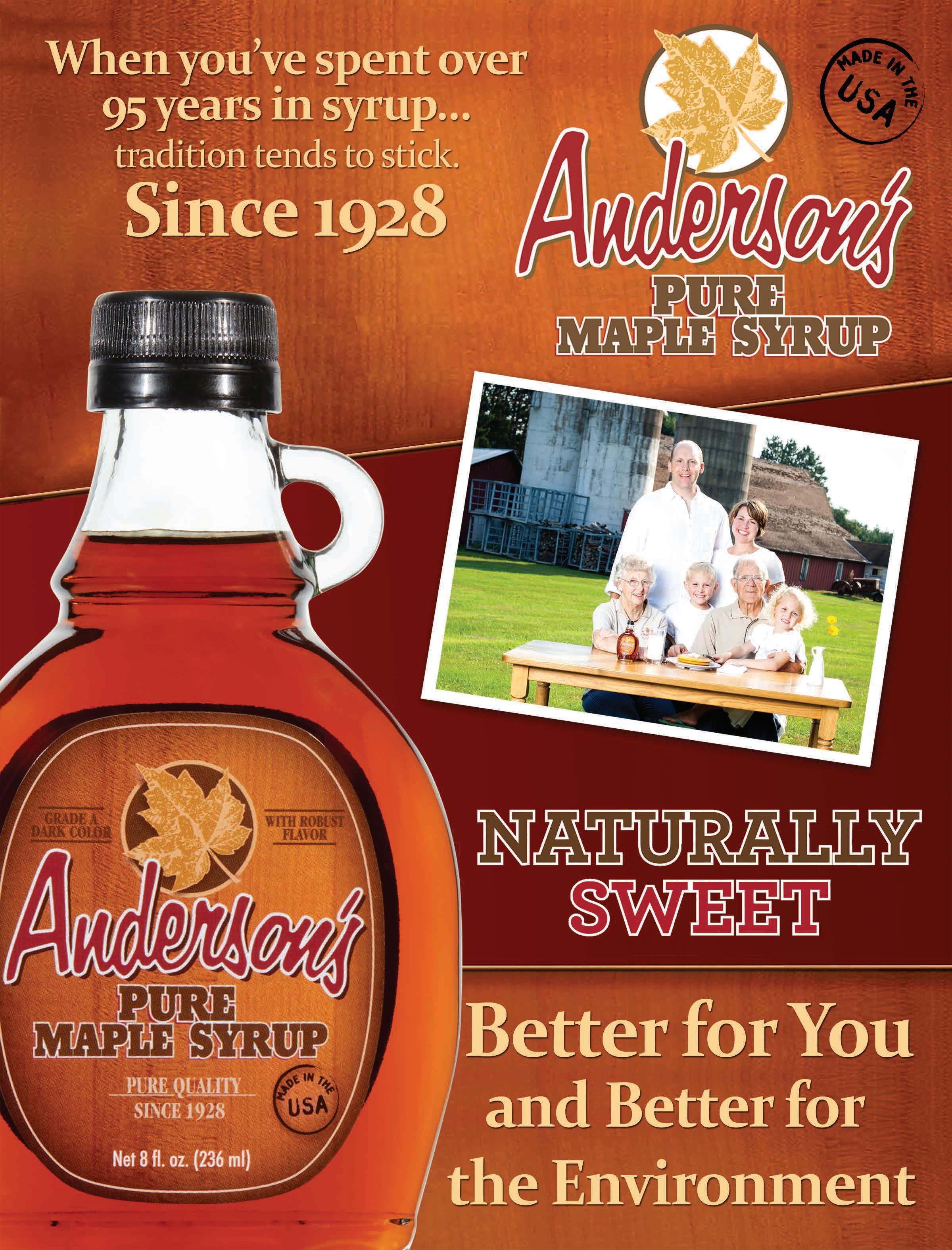
Category Analysis
Greeting Cards
Although the world has become reliant on technology, there is something to be said about the value of a sentimental, hand-written card. Even though leading greeting card manufacturers have continued to innovate with creative concepts and releases, it is still safe to say that the tried-and-true, simple greeting card remains unmatched.
“So far in 2025, Designer Greetings has seen steady growth in customer demand, particularly in premium and occasion-specific greeting cards. Our focus on innovative designs and quality materials has resonated well with consumers seeking meaningful, personalized connections,” said Steven Gimbelman, CEO and President of Designer Greetings. “One key win has been successfully expanding fulfillment capabilities, allowing us to meet retailer needs promptly despite supply chain challenges. Our ability to maintain inventory levels and deliver on time has strengthened our reputation among retailers and end customers alike. We proudly have the perfect order turnover in the industry as well as the highest fill rate percentage in our industry.”
“Looking ahead, we see significant opportunities in personalized hybrid greeting cards that combine traditional paper with digital elements,” said Gimbelman.
“We also plan to increase focus on seasonal and niche occasions, which are gaining traction among younger consumers. Sustainability is another key area—by expanding eco-friendly product lines and packaging, we can attract environmentally conscious shoppers. Finally, partnering more closely with retailers to develop exclusive card lines tailored to regional preferences will be a strategic priority.”
Designer Greeting mentioned the various ways the company has been able to elevate the category despite higher costs within the industry.
“Higher costs across materials and logistics are a challenge we’re addressing through several strategies. We’re optimizing production processes to reduce waste and improve efficiency. At the same time, we’re emphasizing product
quality and design to justify premium pricing while also offering value tiers for more budget-conscious buyers. Collaborative promotions with retailers and bundling options help deliver perceived value, and we continue exploring sustainable materials that, while sometimes costlier upfront, appeal to consumers and support long-term value,” said Gimbelman.
The Greeting Cards Association explored the aspects of the category that is most exciting.
“Thanks to our dynamic and ultra-creative maker community, there’s a card to perfectly suit any occasion or recipient,” said a Greeting Cards Association spokesperson. “While there are always countless designs to celebrate people observing circle-of-life milestones like birthdays and retirements with the love and attention they deserve, greeting cards today often do a lot of heavy emotional lifting around more difficult situations in life. They can initiate difficult conversations regarding challenges like divorce, sobriety, grief, identity and illness and enable us to support each other in a more permanent way than spoken words. Any time in the future that that recipient wants to remember that person or occasion, they can take that card out of the envelope and once again feel that familiar presence and wisdom. As long as there are dark days—as well as moments and people to celebrate— we will need greeting cards to help lift us through and remember them.”
Hallmark has been a pillar in the greeting cards category. Through this extensive presence within the space, the company has continued to create magic through sentimental products and words for decades. Within the last year, the company has continued to innovate in the category through various partnerships and developments. Alongside this, the company continues to evolve and grow with its community.
“Hallmark is a consumer-led brand. It continues to evolve to meet modern consumer needs, across its entire product portfolio. Hallmark creates content that gets to the heart of what shoppers want to say, while authentically reflect-
ing their lives and relationships,” said Amy McAnarney, VP and General Manager, Strategic Accounts. “Hallmark’s product creation always begins with research and insights. The Hallmark Trends Studio, Hallmark Insights and Analytics, as well as individual product teams look into global trends, what people are searching for, their relationship dynamics and how they communicate with one another to proactively develop new creative strategies to meet the needs of multi-cultural and multi-generational consumers. Hallmark’s portfolio of distinctive brands and collections was created for modern consumers and their evolving needs. With unmatched breadth and distinctive creative solutions, there is a perfect Hallmark card for every relationship, season and occasion.”
According to Gimbelman, consumers have been gravitating toward value.
“Our research shows consumers increasingly value authenticity and personalization,” he said. “Cards that allow customization or convey heartfelt, unique messages perform well. There’s a strong trend toward premium textures, tactile finishes, and artistic designs. Additionally, consumers are drawn to cards that tell a story or support a cause, such as those with charitable partnerships. Younger buyers are especially interested in cards that blend tradition with modern aesthetics and interactive features.”
“Retailers report that shoppers remain price-conscious but still seek quality and meaningful products. To support this, we’re working with retailers to optimize shelf space with a curated mix of value and premium cards. We provide point-of-sale materials to highlight product features and promotions that emphasize value. Additionally, we offer flexible order quantities and seasonal exclusives to help retailers manage inventory more effectively and attract different customer segments. Our goal is to help retailers balance cost sensitivity with the desire to delight customers,” Gimbelman said.


Category Analysis
Bison
In the last few years since the pandemic, bison has risen to become a popular animal protein, so much so that it garnered a mention on this year’s Power of Meat presentation at the Annual Meat Conference by the Meat Institute and FMI—The Food Industry Association in March. The growing demand, coupled with a combination of drought, wildfires and higher food costs and interest rates, has caused a noticeable dearth of supply in recent months. Bison suppliers in 2025 are filling orders where they can and continuing to search for ways to mitigate the shortages—some also looking for additional ways to utilize the carcasses—all while patiently waiting for the breeding cycle of growing calves to yield enough matured animals for slaughter.
“There’s a lot of demand and we’re probably in the shortest supply we’ve ever seen just due to drought, high food costs, high interest rates, and that’s stemming back five years ago,” said Cory Schmeling, SVP of Sales for Great Range Bison. “And then I believe it was 2023, there was a hard breed up impregnating of animals, not as well as we had liked, so it’s just a perfect storm on what’s going on with the short supply and then demand is up. People are liking the product. That’s good and during Covid, we got a lot of trial because our supply chain was not shut down with the ports and all that other stuff, so a lot of times they saw Great Range on the shelves and never tried bison but it was the only red meat available. So, we got a lot of trial during Covid which was great, and we got returning customers—your second and third buys—and then just kept on repeat customers so it’s been good. That’s what we wanted but that’s just a little challenging this year.”
North American Bison, a rancher-owned company, is also staying on top of filling orders. “The industry flipped really last year from having an oversupply of animals to an undersupply of animals against consumer demand,” said SVP of Sales Al Samuelson. “I’d hate to say Covid was good for the category and the business, but it was very good because people in grocery stores, they wanted to try all kinds of
things, so we got a lot of new people to the category and then it grew pretty quickly. We didn’t get that dead cat bounce afterwards. We continued to see expansion. There are about 750,000 animals in North America, and about 75,000 a year are harvested; so compared to beef, it’s a very small category. We worked very closely with our retail restaurant partners last year. We’re finding our customer base as this was happening and that’s allowed us this year to really work very well with our partners and focusing on on-time and full deliveries. The majority of the business is fresh product so the timeline is very quick and you have to get it from the animal through our facility to retailer shelves within a few days or a week. There’s a lot of very fine points, but we’ve had a fantastic year because of the work we did and some of the tough decisions we made last year. And then consumer demand continues to outpace the meat category. When I have meetings with our retail partners, they’re always asking, ‘How can we get more?’”
That enviable position of facing high customer demand is underscored by the fact that many are return customers. “The one thing that’s fascinating to me about bison is that it’s very much a consumer trial because people go, ‘Oh, I’ve heard about bison,’ but they haven’t tried it,” said Samuelson. “They don’t know if it’s gamey, what it tastes like. They know it’s leaner and healthier, but once the try it—a rib eye looks like a rib eye, a burger looks like a burger—so it’s familiar to them physically, but once they try it, it is also a familiar flavor profile. A lot of people say it tastes similar to beef but maybe a little cleaner, a little sweeter, so not only do we get a lot of trial of consumers, but it is a very sticky shopper. They come back more and more and that’s what you want in any product. You don’t want a one and done. You want people to come back more.”
There’s a lot to love about bison, said Samuelson. “If you look at the health benefits, it’s lower in fats, calories and cholesterol than virtually every other protein but it’s higher in vitamin B, higher in iron, so less of the bad stuff, more of the good stuff,” he said. “Really
what we’re working on is just nutrient supplements that some of these organs will go into because they’re so nutritionally dense and that’s what we’ve been working with in manufacturing for a few years now, and it’s just starting to get to market in a few narrow places but we’re having conversations to blow that up. That’s super exciting.”
The beloved story of sustainability also appeals to many eco-conscious consumers. “Northfork Bison is leading the conversation on sustainability in the bison category working closely with our Canadian bison producers through regenerative farming practices that prioritize soil health and biodiversity,” CEO Marc Mousseau said. “By promoting ethical treatment of animals and minimizing environmental impact, we are setting industry standards and inspiring others to adopt more sustainable practices, thereby, positively impacting the environment and consumer perceptions.”
As to the demand for clean protein, “Northfork Bison has adeptly responded to the growing consumer preference for healthier food choices by offering lean, protein-rich bison meat that is free from antibiotics and hormones. We focus on natural grazing and sustainable farming methods that not only ensures healthier products but also aligns with consumers seeking nutritious alternatives to conventional meats,” said Mousseau.”
Meanwhile, with the current supply shortage, suppliers are doing their best to maintain open communications and setting realistic expectations for their rancher partners. “It’s about a five-year turnaround for that rancher to see money back in his pocket,” said Schmeling. “Say a calf dropped in April of this year, they wouldn’t see that money until close to 2030. And then the breeding cycle for bison is different than cattle. It takes a little bit longer so they’re almost 3 years old when they have their first calf. So almost a whole year longer than cattle.”
In spite of the current supply shortgage, the bison category has continued to rise in popularity due to leading suppliers perfecting their sustainability and leadership practices.
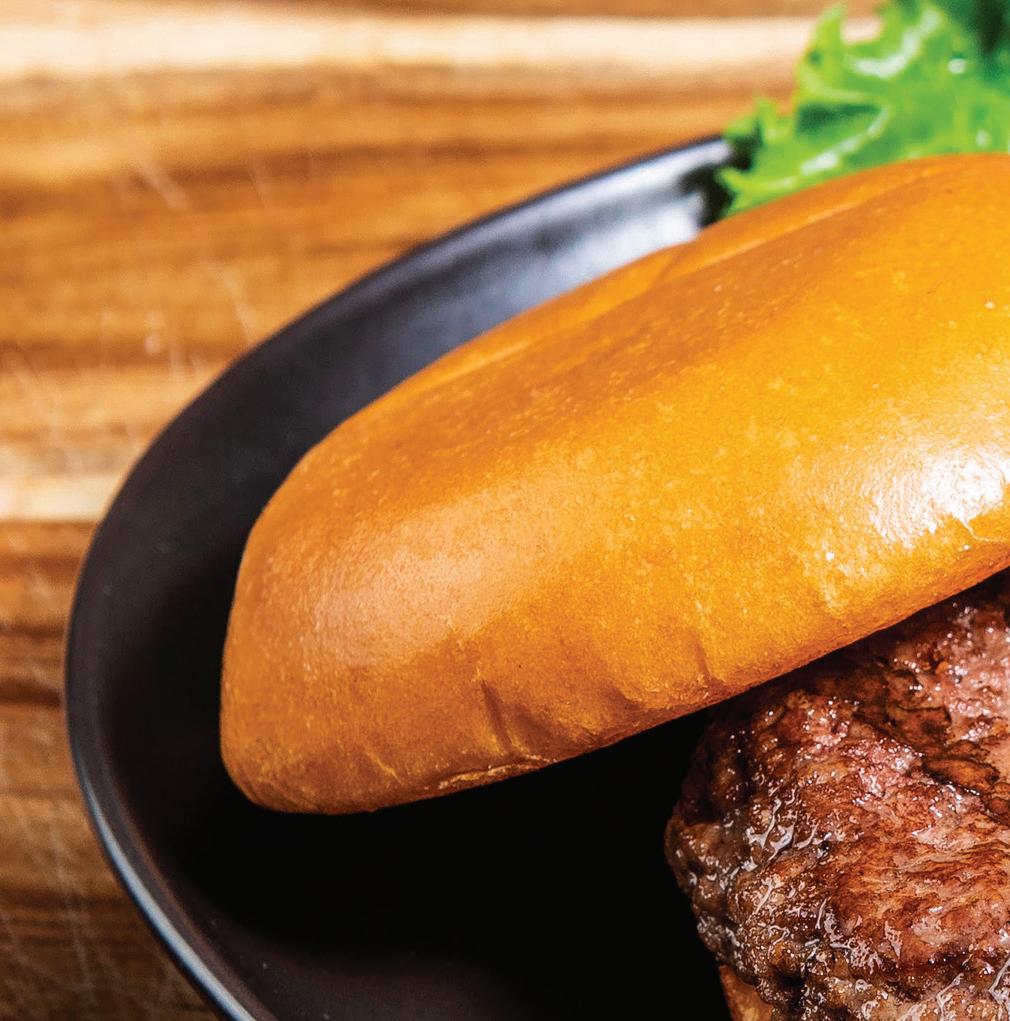
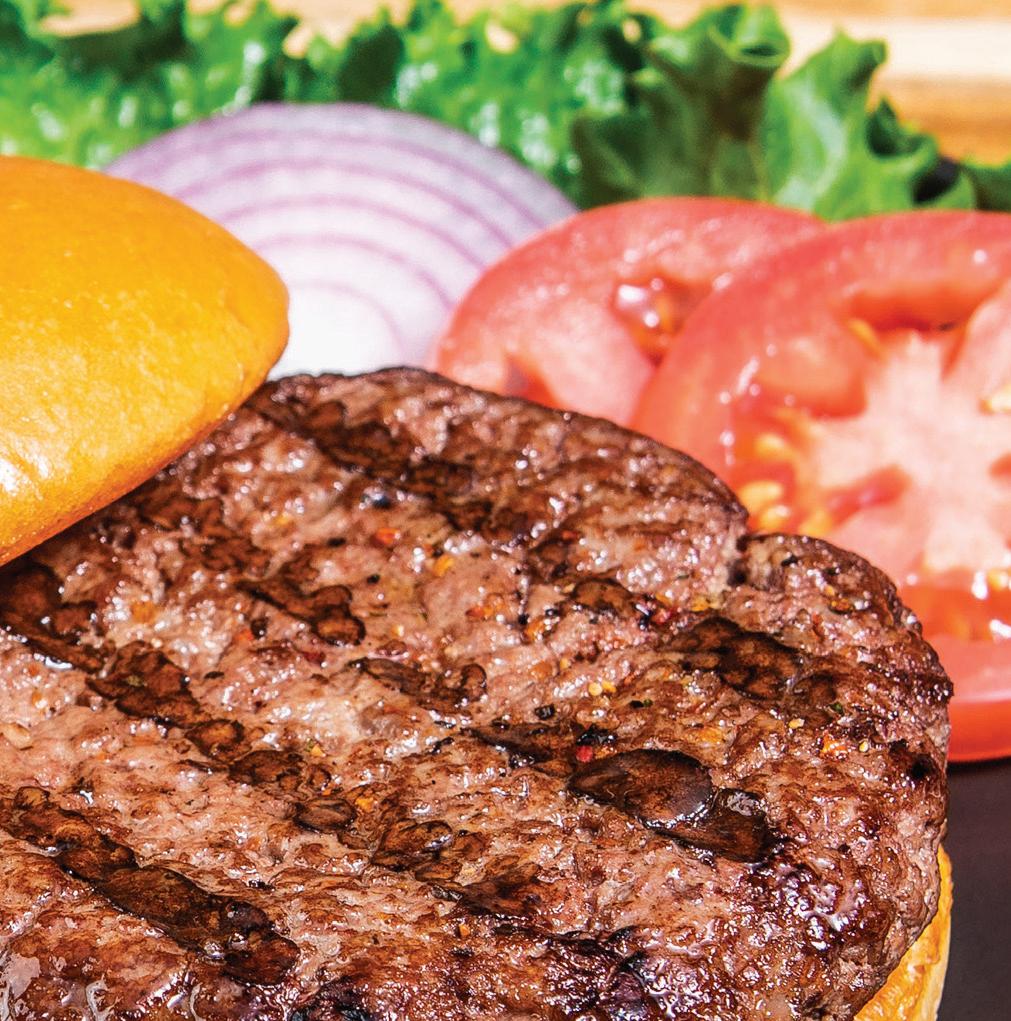




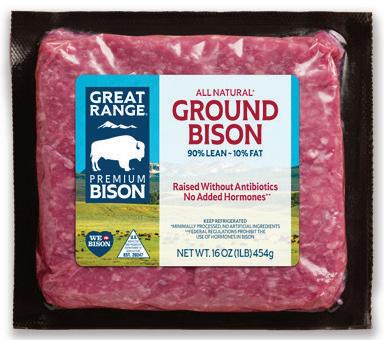

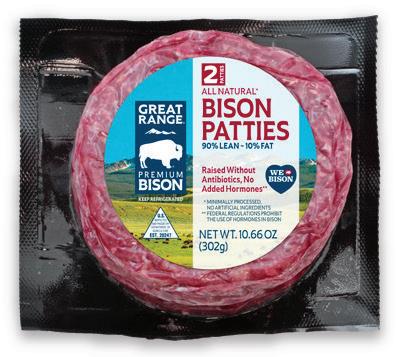

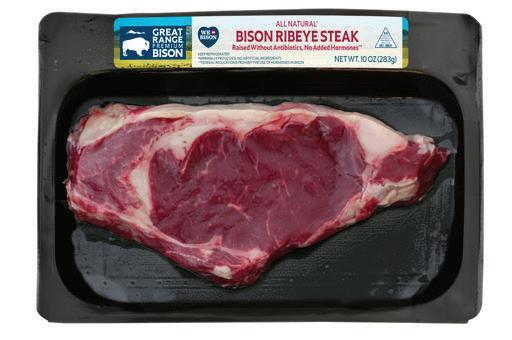
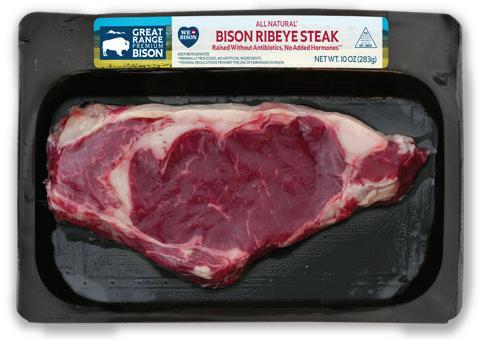

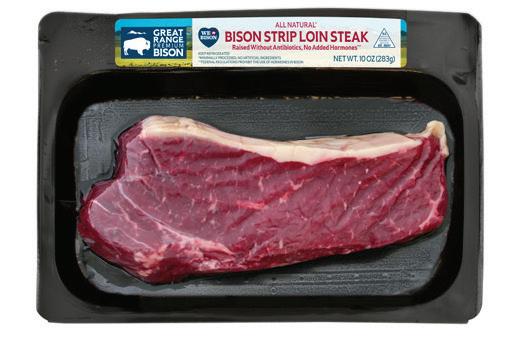
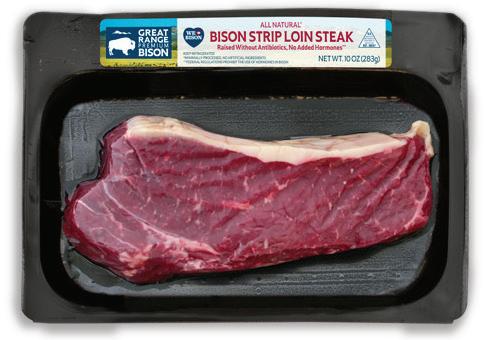
Category Analysis
Frozen Fruit
The frozen fruit market is experiencing significant growth driven by consumer interest in health, convenience and plant-based foods, with projections reaching $4.2 billion by 2031. Innovations such as isochoric freezing improve flavor and texture while reducing energy use and pre-portioned smoothie packs meet demand for quick, nutritious options. Leading brands Campoverde, Dole, Nature's Touch, Pitaya Foods, SAMBAZON and Wawona are expanding their offerings to include organic, clean-label and ready-to-eat products in the form of smoothie bowls, smoothie pops and fruit purées. The category’s growth includes emerging subcategories such as smoothie kits and blends, providing diverse, versatile options that cater to health-conscious shoppers seeking convenience and nutrition.
“Our outlook for 2025 is cautiously optimistic,” Wawona Frozen Foods Executive Vice President Blake Smittcamp said earlier this spring. “Demand for healthier, convenient food options continues to rise and frozen fruit is well-positioned to meet that need. However, we remain mindful of economic pressures, evolving consumer behaviors and supply chain volatility. Our strategy is centered on innovation through product diversification, automation in processing and deepening our sustainability initiatives to align with a values-driven market. We are also closely monitoring external factors such as tariffs that could impact our supply chain and overall operational agility.”
“Challenges also sharpen our focus on key opportunities—most notably, expanding our value-added offerings like pre-portioned smoothie packs and clean-label fruit blends that resonate with today’s health-conscious consumers,” he continued. “On the domestic front, we see significant growth potential in both foodservice and retail, especially with partners who value reliability, traceability and premium frozen fruit.”
“The current status of frozen fruit is a mature category with an emerging subcategory of smoothie kits with growing
assortment choices,” Seal the Seasons CEO Patrick Mateer previously said.
Frozen Fruit Category: The frozen fruit category is in the midst of momentous growth, with projections predicting an increase from $3.1 billion in 2024 to $4.2 billion by 2031, according to the findings published in June of this year by Persistence Market Research. This trajectory is driven by growing consumer interest in health-conscious, plant-based and ready-to-eat foods.
Furthermore, the emerging switch to adopting vegan diets, particularly among younger shoppers—notably the Millennials—is spurring the demand for frozen fruit. The long shelf life and preserving nutrients are making frozen an appealing option for shoppers.
Consumers are enjoying their frozen fruit in smoothies and cool beverages, with 41.2 percent of the market comprised of shoppers that prioritize yearround availability, convenience and minimal prep work to enjoy frozen fruit in smoothies, baked goods and desserts.
Additionally, advancements such as isochoric freezing are improving product quality by better preserving texture and flavor while reducing energy consumption, and suppliers offering pre-portioned smoothie packs are in response to consumer demand for convenient, nutrition-packed and ready-toeat options, further supporting market growth.
“Wawona’s deep-rooted family values and vertically integrated model give us a unique edge,” Smittcamp said. “We don’t just process fruit—we grow it, pack it and oversee every stage to ensure quality and transparency. Our approach to problem-solving emphasizes collaboration, long-term thinking and proactive risk management. We invest in technology not just to improve efficiency, but to better anticipate issues before they arise. This hands-on, detail-oriented mindset helps us build strong, resilient relationships across the supply chain.”
“Trust is built through consistency, transparency and integrity,” he added. “We prioritize open communication with our partners and consistently meet our commitments. Our certifica-
tions, food safety protocols and traceability systems provide the confidence customers need. With consumers, we emphasize clean labels, sustainable practices and high-quality fruit—communicating our values clearly across branding and packaging. Being family-owned for generations also adds an extra layer of trustworthiness to our brand story.”
Smoothie Kits: Last summer, Seal the Seasons launched its Blue Spirulina Smoothie Kit at retail and garnered interest from several key grocers.
“We have taken the guesswork out of assortment decisions by rationalizing down under-performing SKUs so we are only offering our retail partners high performing items for their categories,” Mateer said. “We have stayed on the forefront of innovation by building out our smoothie kit supply chain and offering innovative flavors like Blue Spirulina and we attribute success to our team’s persistence and culture of perseverance and grit.”
“Category managers are dedicating more of their assortment to innovation items and locally grown foods because they see how branded items drive stronger category growth than just private label,” he continued. “Customer service levels and promotional support is crucial. We are seeing brands with poor service levels or poor promotional support being discontinued. We are seeing grocers interested in more locally grown foods, especially unique offerings like antioxidant blends. We are also seeing category managers expand merchandising space for frozen fruit to open up room for the smoothie kit subcategory.”
Healthy Treat Options: Pitaya Foods kicked off the year by expanding distribution of its health-focused Organic Smoothie Pops now available at more than 1,300 Kroger stores nationwide, featuring two popular varieties—Organic Dragon Fruit & Mango and Organic Acai & Blueberry. Additionally, at the Summer Fancy Food Show in late June, Campoverde sampled a new fruit on a stick offering, available in mango, watermelon and assorted flavors.
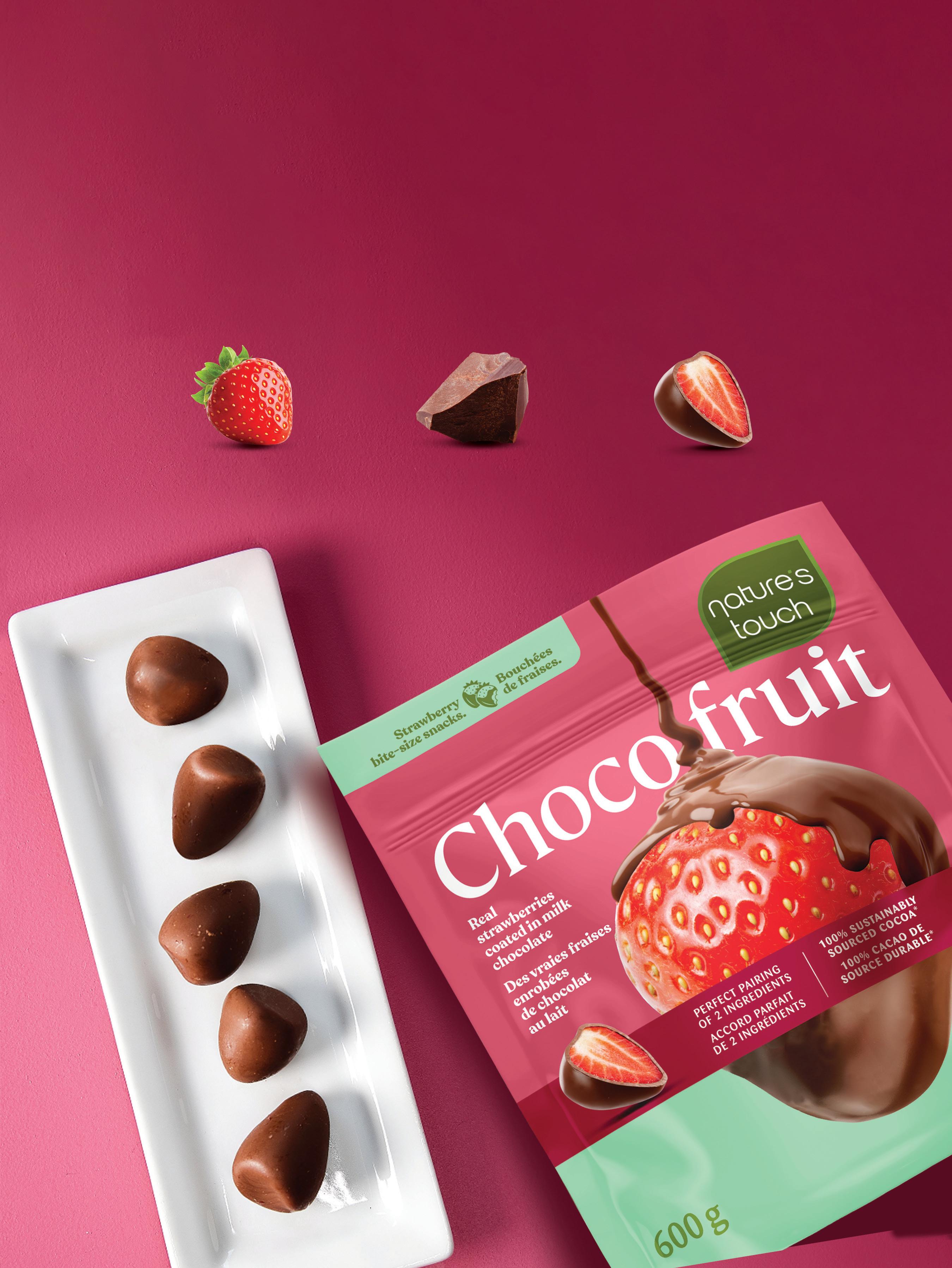
Upcoming Grocery Industry Events


1. SUPERZOO Aug. 13-15, 2025 Mandalay Bay Las Vegas, NV www.superzoo.org
2. Newtopia Now Aug. 20-22, 2025 Colorado Convention Center Denver, CO www.newtopianow.com
3. NACSSHOW2025 Oct. 15-17, 2025 McCormick Place Chicago, IL www.nacsshow.com
4. The Global Produce & Floral Show Oct. 16-18, 2025 Anaheim Convention Center Anaheim, CA www.freshproduce.com
5. NFRA Convention Oct. 18-21, 2025 Marriott World Center Orlando, FL www.nfraconvention.org
6. PLMA's Store Brands Marketplace Nov. 16-18, 2025 Donald E. Stephens Convention Center Chicago, IL www.plma.com
7. Winter FancyFaire* Jan. 11-13, 2026 San Diego Convention Center San Diego, CA www.specialtyfood.com
Breeding Better Berries
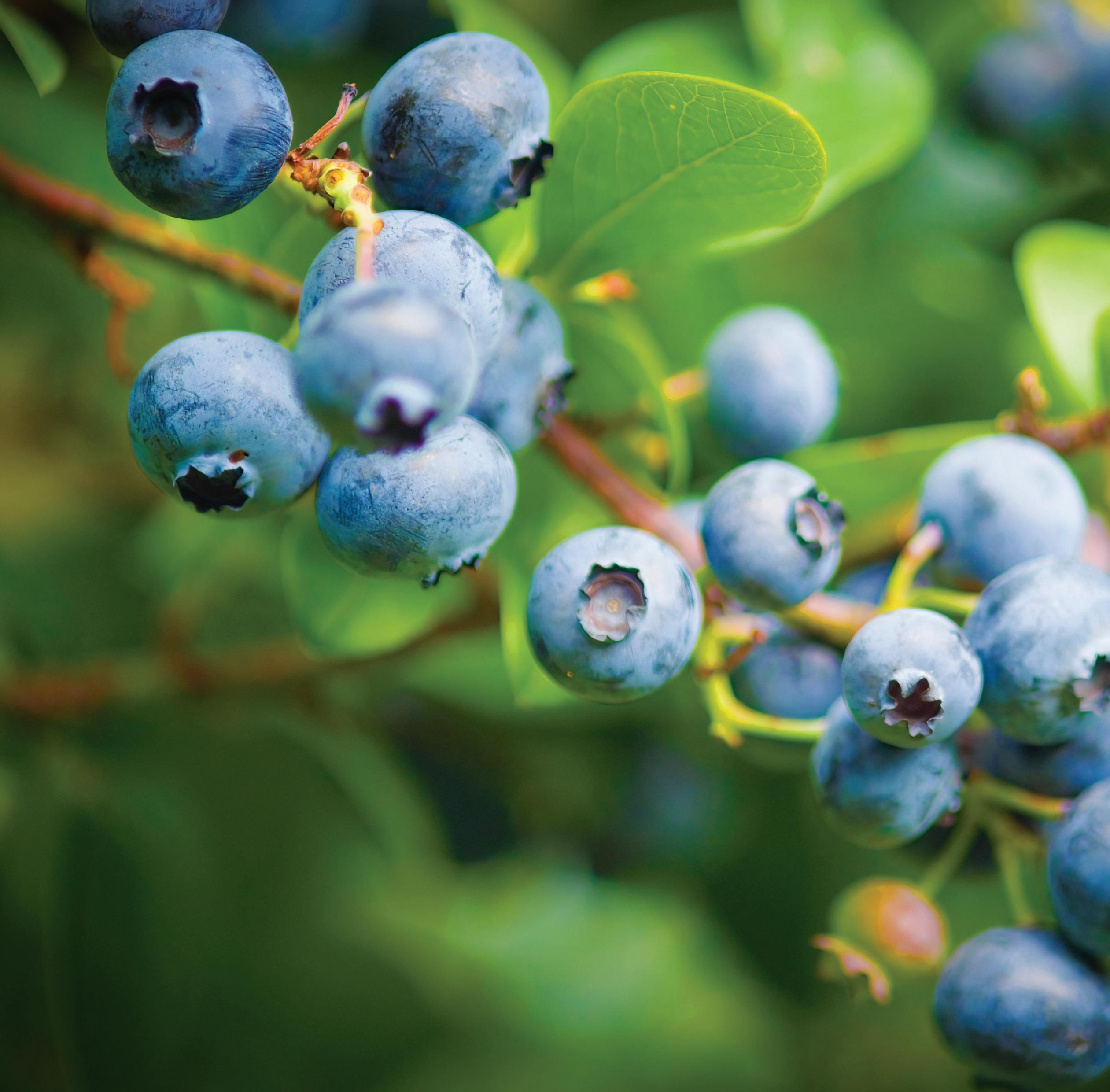



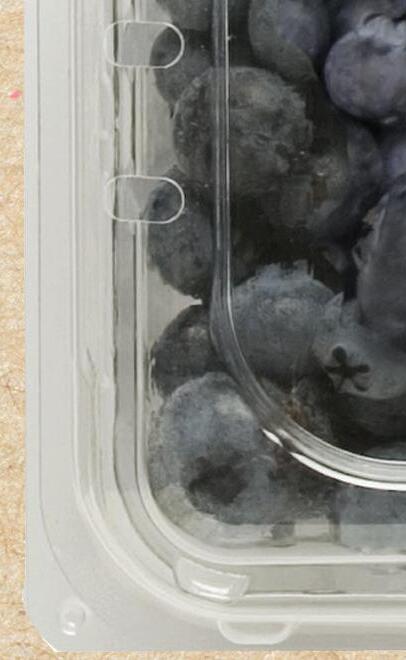
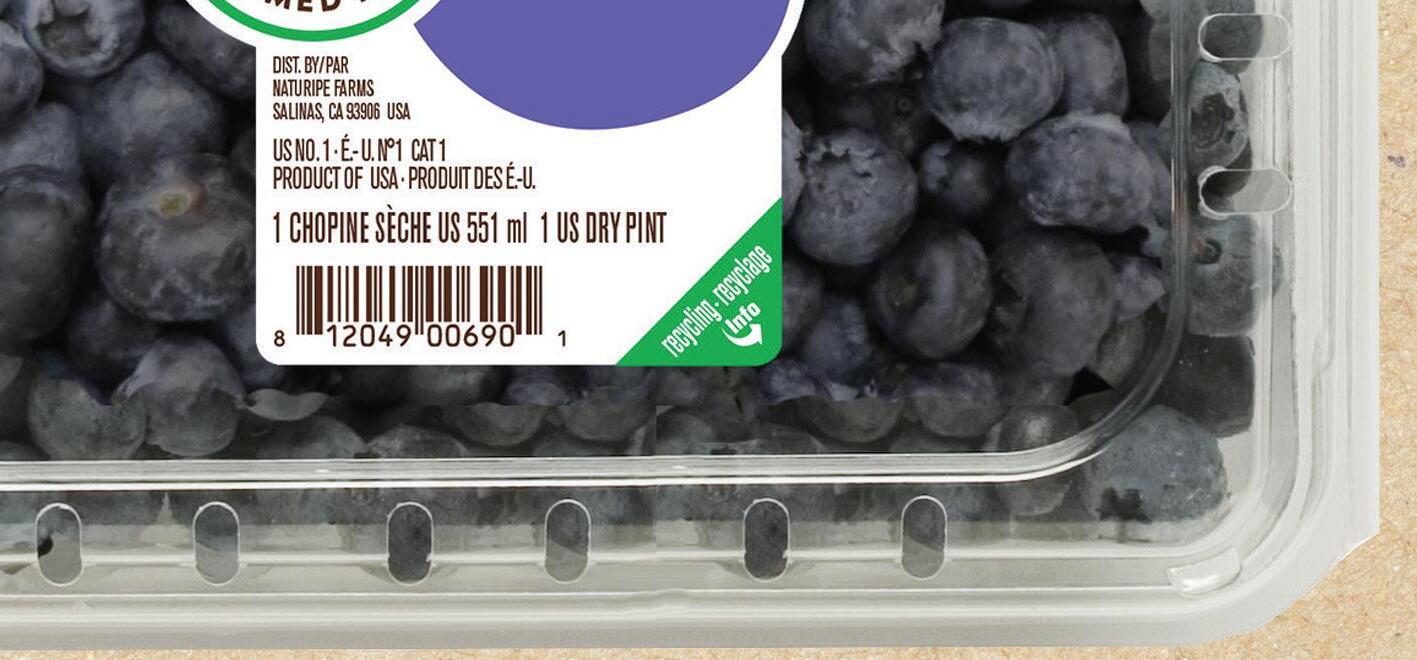



IN CONVERSATION

Bill Lynch, President, Specialty Foods Assocation
How was this year's Summer Fancy Food Show as compared to years past?
I’m happy to say that this year’s show exceeded our high expectations. The enthusiasm of the attendees and creativity and passion of the exhibitors helped make the event so dynamic and fun. Each year, the SFA team, our members and the international community that takes part in the show work together to put on the kind of event that buyers, investors and press want to keep coming back for.
Both Summer and Winter events continue to perform well—what do you attribute that continued success to?
Bringing together 32,000 people under one roof, as we did at the Summer Show, is a testament to the momentum that specialty foods is experiencing and the innovation and excitement SFA members and international exhibitors bring to the show. We introduced some new features, like the SFA Membership HQ, and expanded others, like Debut District taking over the River Pavilion, based on what we know attendees and exhibitors are looking for from the Summer Fancy Food Show.
How did total attendance at the show in New York look?
Fantastic—we saw an overall increase of 14 percent in attendance including a 9 percent increase in buyers over 2024.
Did the trend of continued strength in international attendance continue this year?
From an exhibitor standpoint, the Fancy Food Show continues to be a truly global event. We hosted brands
“The food industry is always changing, but you’re right that the last several years have involved a lot of uncertainty and rapid change. Things like regulatory and tariff policy changes present a challenge for our members and the specialty food industry as a whole. As such, SFA is staying very close to these issues. We’ve already introduced additional resources, guidance, and tools for our members this year.
At the Summer Fancy Food Show Show, we hosted a panel discussion during the show called ‘Outsmart Tariffs and Come Out Stronger: Advice for Unpredictable Times’ featuring makers and a legal expert. This continues our introduction of monthly Member Town Halls focused on policy changes like tariffs, and a member-exclusive package of benefits to support members navigating the legal challenges around regulation and legislation. SFA will continue bringing the specialty food community together at events like the Fancy Food Show and upcoming Winter FancyFaire*, and we expect that these opportunities to collectively problem-solve and brainstorm will help makers, buyers and others navigate these changes.”
— Bill Lynch, President, Specialty Food Association
from 59 countries and six continents, introduced the first-ever Estonia and Pakistan Pavilions, and saw the Italian Pavilion expand to include more than 320 exhibitors.
Looking ahead to the Winter FancyFaire* in San Diego—why did the association decide to go with an updated name and approach for this year’s winter event?
Winter FancyFaire* is a new tradeshow experience; it’s not the Winter Fancy Food Show anymore, and we felt that a new show deserves a fun new name. The asterisk at the end represents a snowflake, so the show always carries a little piece of winter with it. What trends and traditions from the Winter Fancy Food Show can we expect to continue?
Holding the first big food show of each annual cycle has always been significant for SFA, and we’ve worked to set our January events up to provide a look ahead for all participants. That will continue, as well as all the traditional trade show opportunities that our exhibitors and attendees have come to expect from SFA shows: discovery, networking trendspotting and more. What’s going to be different about the Winter FancyFaire* as compared to the show in Las Vegas?
Designed even more intentionally to overcome the post-holiday slump and provide big-time inspiration and guid-
ance each January, Winter FancyFaire* is a new trade show experience. The event will offer both traditional and experimental settings for sampling, trendspotting, and networking. Participants will find exciting business opportunities within the Convention Center but also beyond it, at San Diego restaurants, retail and attractions.
New activations are in the works for the Exhibit Hall and upstairs in what we’re calling the New Horizons Hall. This will include our co-location with the Good Food Mercantile, which was just announced on Saturday, June 28.
We’re excited to bring the 2026 sofi™ Awards celebration to Winter FancyFaire*, as well as the first-ever reveal of the specialty food Trend of the Year, as determined by SFA and our research partners.
What attracted you to San Diego as host city ?
The San Diego metropolitan area combines state-of-the-art facilities with a vibrant food retail and restaurant scene and a high concentration of specialty food makers and buyers. We’ve heard from show participants a desire to return to California, and we’re very excited to deliver on that for them.
How can attendees and exhibitors prepare to take best advantage of the Winter FancyFaire*?
Our new website for Winter Fancy-
r Cont'd on Pg. 22
You came (to North America’s most comprehensive pet product marketplace). You saw (the latest, greatest pet products). You conquered (your business challenges). And we can’t wait for you to keep that momentum going next year! Thank you for helping to make SUPERZOO the incredible, fun-filled event that it is. We look forward to seeing you in 2025!
August 13-15, 2025
Education: August 12-13, 2025
Mandalay Bay, Las Vegas, NV
18,000+
Pet professionals participate, including:
10,000 buyers—the most
3,300+ buying companies 1,000+ exhibitors
Largest Industry Show Floor
330,000 square footage
Q&A Interview: Bill Lynch, Specialty Foods Association

Faire* is live now, with a plethora of information about participating as an exhibitor or attendee: www.winterfancyfaire.com. If you’re ready to secure your badge for the show, registration is open! You can also subscribe to SFA’s e-mail newsletter to get updates on Winter FancyFaire* and reminders to register. Exhibitors may book a booth now or explore some of the new and exciting sponsorship options we’re offering to boost their investment in the show.
How is the event engaging with the local community on both a macro level, but also with individual communities, like Barrio Logan, Little Italy and the Gaslamp?
We’re in the process of developing an activation called the Campus Tasting Trail, which invites all show participants to branch out and experience the local culture and cuisine. Our goal is to engage specific retailers, restaurants and local attractions in a variety of nearby neighborhoods to both bring Winter FancyFaire* out into the city and bring a taste of the city to Winter FancyFaire*.
What the local community engagement will look like?
As the local community embraces Winter FancyFaire*, we are committed
to giving back and leaving our host city better than we found it. We’re exploring multiple ways to support the San Diego neighborhoods and groups that are hosting us. More will be announced on this front in the coming months. What opportunities are there for exhibitors to contribute to that engagement?
Our goal with the Campus Tasting Trail is to blend the creativity and heritage of local tastemakers with the innovation of SFA member companies. Restaurants and retailers in nearby San Diego neighborhoods will feature SFA member products in menu items and as shopping accoutrements. Specific restaurants and featured products will be announced in the fall. Members and interested brands should contact sales@specialtyfood.com to express
interested in having your product featured.
Will there be excursion opportunities for attendees to connect with the local participants?
We are exploring many models for the Campus Tasting Trail and look forward to announcing soon new opportunities for attendees that best serve their interests as well as the local businesses. How will the Winter FancyFaire* provide access to local flair while still encompassing the largest gathering of gourmet exhibitors on the West Coast?
By pushing product discovery into the larger San Diego community, we are inviting attendees to experience all of the wonderful cultural authenticity that the city has to offer—just with a little added “kick” of specialty food built in.
Key Winter FancyFaire* Links:
• General Information: https://www.specialtyfood.com/fancy-foodshows/winter-fancyfaire/
• To Register: https://www.specialtyfood.com/fancy-food-shows/winter-fancyfaire/register/
• To Exhibit: https://www.specialtyfood.com/fancy-food-shows/winter-fancyfaire/exhibit
• Sponsorships: https://www.specialtyfood.com/fancy-food-shows/ winter-fancyfaire/sponsorship-opportunities
Photo courtesy of the San Diego Convention Center. Winter FancyFaire* is scheduled for Jan. 11-13 at the San Diego Convention Center.
r From Pg. 20
37,000,000,000,000

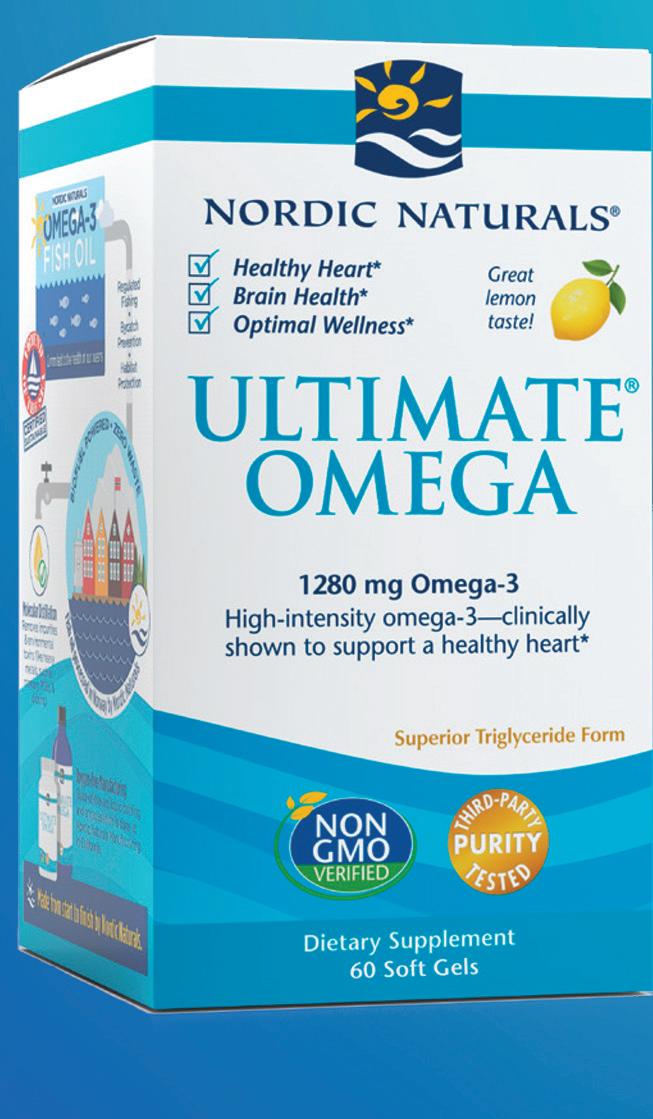













































































Be the First to experience the bold future of food



































































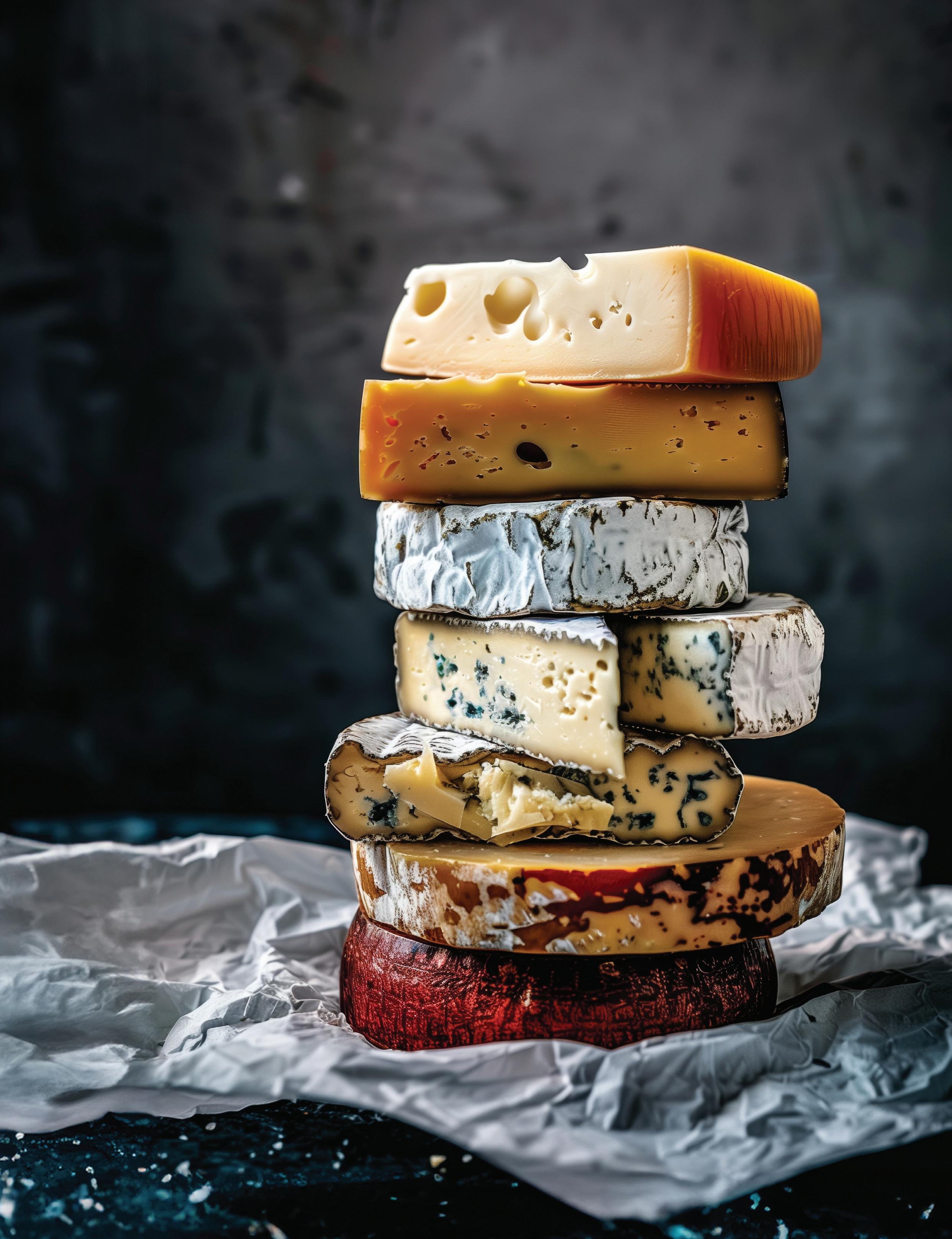







Scan to learn about exhibiting and attending
